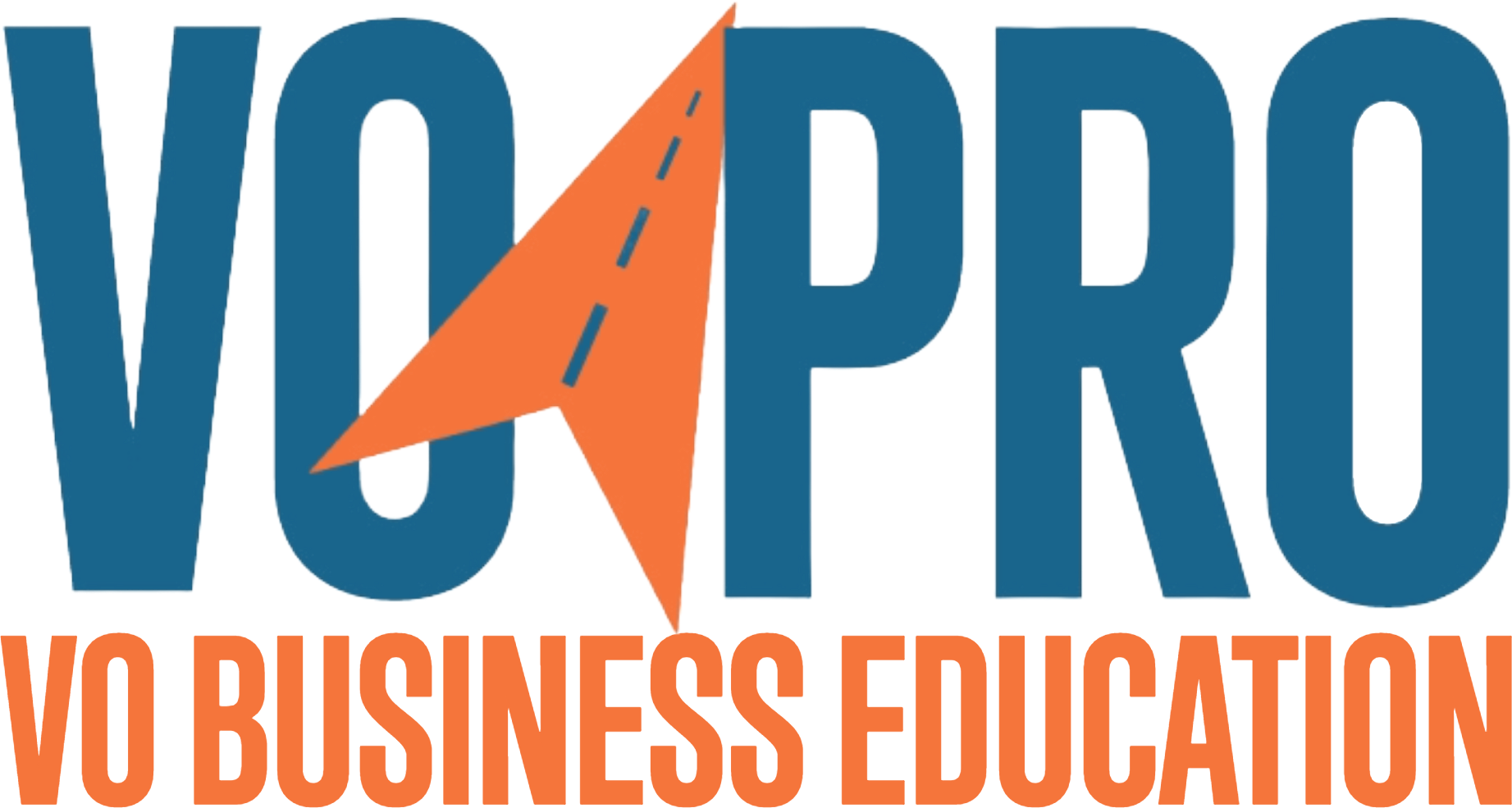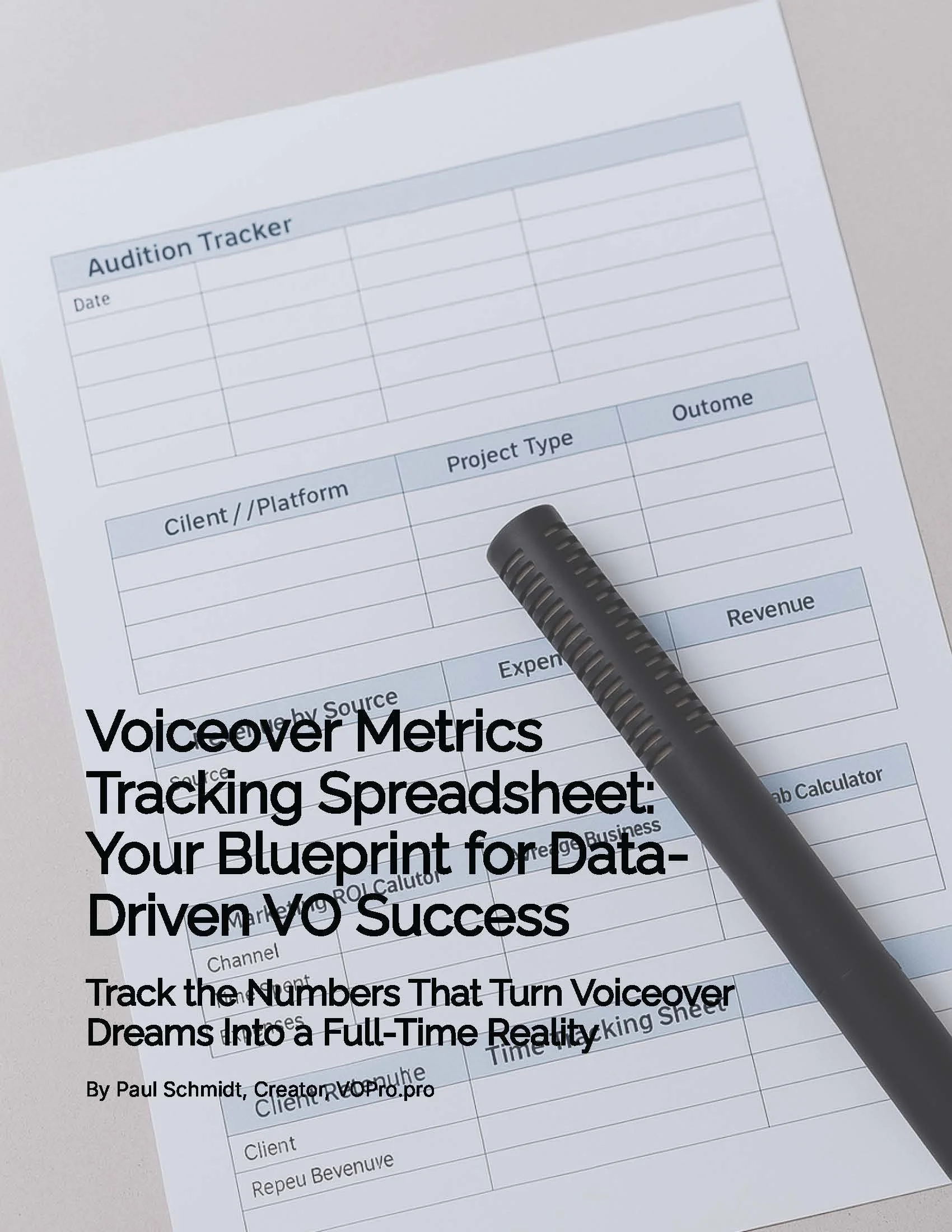Stop GUESSING: Track These VO Business Numbers!
Hot take: The overwhelming majority of part-time voice actors will never go full-time.
Not because they lack talent, but because they refuse to treat VO like a business.
If you’re still measuring your success by the number of auditions you send or the compliments you get on your demo, you’re doing it wrong.
The real winners in voiceover know their numbers. They know exactly what’s working, what’s not, and how to pivot for profit. Are you ready to join them?
The Day I Stopped Guessing and Started Growing
Here’s when everything changed for me. I was a few years into my voiceover journey, juggling a day job and hustling for gigs on the side. My inbox was a pile of “thanks, but no thanks” emails.
I was working like a dog, but my bank account didn’t show it.
One night, after another fruitless week, I realized I had no idea what was actually moving the needle in my business. Was it my marketing? My auditions? My rates?
I was flying blind and deaf.
That’s when I made a choice: I would start tracking everything.
Not just auditions and bookings, but every metric that could tell me where my time and money were going, and what was coming back.
It was tedious at first, but within a few weeks, I saw patterns I’d never noticed. I stopped wasting hours on low-yield platforms. I doubled down on the marketing channels that actually brought in clients.
My income didn’t just begin to grow; it started to become predictable. That’s when I knew I was running a business, not just jacking around.
Why Metrics Matter More Than Talent
The Myth of “Just Be Good and They’ll Find You”
Let’s bust a myth right now: being a good voice actor is not enough. The industry is flooded with talent. What separates the full-timers from the hobbyists is an ability to make data-driven decisions.
If you don’t know your numbers, you’re leaving your career to chance.
The VO CEO Mindset: From Artist to Entrepreneur
Think of yourself as the CEO of your own voiCEOver company.
CEOs don’t guess. They measure, analyze, and act. They know their Key Performance Indicators (KPIs) inside and out.
If you want to go full-time and earn consistently, you need to adopt the CEO mindset. It’s not about losing your creativity; it’s about giving your talent the business engine it needs to support you.
The Essential Voiceover Business Metrics You Must Track
Let’s break down the core metrics that matter for voice actors. These aren’t just numbers. They’re the levers you can pull to grow your business.
1. Audition-to-Booking Ratio
What it is: The percentage of auditions that result in bookings. Booked jobs divided by auditions.
Why it matters: This is your most direct measure of effectiveness. If you’re auditioning 100 times and booking once, something’s off. Probably your reads, and therefore your training. Could also possibly be your demo or your targeting.
How to track it: Keep a simple spreadsheet. For every audition, log the date, client, platform, and outcome. Calculate your ratio monthly.
Pro Tip: Industry averages vary, but a 3-7% booking rate is solid. If you’re below that, analyze your auditions. Are you submitting for the right jobs? Is your audio quality up to par?
Are you trained well enough to be competitive?
2. Revenue by Source
What it is: Where your income is coming from: direct clients, agents, online platforms, repeat business, referrals, etc.
Why it matters: Not all revenue streams are created equal. Some are high-effort, low-reward. Others can be gold mines.
How to track it: Categorize every payment you receive. At the end of each month, see which sources are most profitable.
Pro Tip: Double down on your best sources. If 80% of your income comes from 20% of your clients, nurture the shit out of those relationships.
3. Marketing ROI (Return on Investment)
What it is: The return you get from your marketing efforts: email campaigns, paid ads, social media, etc.
Why it matters: Marketing is not about being everywhere. It’s about being where your clients are and getting results.
How to track it: For each marketing channel, log your spend (time and money) and the revenue it generates. Calculate ROI: (Revenue – Cost) / Cost.
Pro Tip: Cut what doesn’t work. If you’re spending hours on Instagram with zero leads, redirect that time and effort into what’s working.
4. Client Retention Rate
What it is: The percentage of clients who hire you more than once.
Why it matters: Repeat clients are the backbone of a sustainable VO business. They cost up to seven times less to acquire and often pay better.
How to track it: Track every client and note if they return. Calculate your retention rate quarterly or every 6 months.
Pro Tip: Follow up after every single job. A simple and sincere thank-you can turn a one-off gig into a long-term relationship.
5. Average Job Value
What it is: The average amount you earn per booking.
Why it matters: If your average job value is low, you’ll need to book more gigs to hit your income goals. Raising your rates or targeting higher-budget clients can change the game.
How to track it: Total revenue divided by number of bookings.
Pro Tip: Don’t be afraid to raise your rates as your skills and reputation grow.
6. Time Spent Per Booking
What it is: How much time you spend on each job, from audition to delivery.
Why it matters: Your time is your most valuable asset. If you’re spending hours on low-paying gigs, you’re capping your earning potential. Some genres take longer and pay less, like audiobooks. That’s not a reason not to do them; knowing your numbers can help you make strategic and artistic business decisions.
How to track it: Log your minutes and hours for each project. Look for ways to streamline your workflow.
Pro Tip: Work with an audio engineer like Jordan Reynolds, George the Tech, or Tim Tippets to set up your post stack to save time and minimize repetitive work.
7. Website and Social Media Analytics
What it is: Traffic, engagement, and conversion rates on your online platforms.
Why it matters: Your website and social profiles are your digital storefronts. If they’re not attracting and converting clients, you’re missing out.
How to track it: Use Google Analytics for your website. Track followers, engagement, and inquiries on social media.
Pro Tip: Test different calls-to-action and see what drives the most inquiries.
How to Set Up Your Voiceover Metrics Dashboard
Step 1: Choose Your Tools
You don’t need fancy software. A Google Sheet or Excel file works fine. If you want to get advanced, tools like Airtable or Notion can help you visualize your data.
Step 2: Decide What to Track
Start with the metrics above. Don’t overwhelm yourself. Track what matters most to your business right now.
Step 3: Make It a Habit
Set aside time each week or month to update your metrics. Treat it like a client job. Make it non-negotiable.
Step 4: Review and Adjust
At the end of each month, review your numbers. What’s working? What’s not? Make one change based on your data.
The Mindset Shift: From Fear to Freedom
Tracking your metrics can feel intimidating as hell. Maybe you’re afraid of what the numbers will reveal.
But clarity is power.
When you know your numbers, you can make decisions with confidence. You stop chasing every shiny object and start building a business that works for you.
Common Pitfalls & How to Avoid Them
1. Tracking Too Much
Don’t try to measure everything. Focus on the metrics that drive your business forward.
2. Ignoring the Data
Numbers are only useful if you know them and act on them. If something isn’t working, change it.
3. Comparing Yourself to Others
Your metrics are unique to your business. Use them to compete with yourself, not with strangers on the internet.
How Voiceover Business Coaching Can Accelerate Your Growth
If you’re serious about going full-time, consider investing in voiceover business training.
A good training program will help you identify the right metrics, set achievable goals, and hold you accountable.
They’ll show you how to turn your data into action, and your action into revenue.
Stop Guessing, Start Growing
If you want to make the jump from part-time to full-time, you can’t afford to fly blind.
Start tracking your voiceover business metrics today. Use your numbers to make smarter decisions, focus your efforts, and build a business that supports your dreams.
Ready to take control of your voiceover career?
Know your numbers. The data doesn’t lie. And neither do results.
Want to go deeper?
Check out our coaching programs and resources at VOPro.Pro/WorkWithMe to get guidance on scaling your voiceover business with proven, data-driven strategies.

